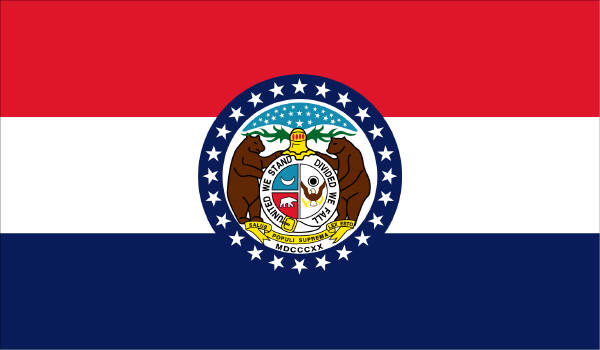Missouri Amendment 1, Legislative Procedures in State of Emergency Measure (1960)
| Missouri Amendment 1 | |
|---|---|
| Election date |
|
| Topic Government continuity policy |
|
| Status |
|
| Type Legislatively referred constitutional amendment |
Origin |
Missouri Amendment 1 was on the ballot as a legislatively referred constitutional amendment in Missouri on November 8, 1960. It was approved.
A "yes" vote supported amending the Missouri State Constitution to authorize the convening of the legislature with a temporary succession of all public officers in the state of disaster caused by an enemy attack. |
A "no" vote opposed amending the Missouri State Constitution to authorize the convening of the legislature with a temporary succession of all public officers in the state of disaster caused by an enemy attack. |
Election results
|
Missouri Amendment 1 |
||||
|---|---|---|---|---|
| Result | Votes | Percentage | ||
| 932,821 | 79.19% | |||
| No | 245,143 | 20.81% | ||
Text of measure
Ballot title
The ballot title for Amendment 1 was as follows:
| “ | Amendment No. 1.- (Submitted by the 70th General Assembly.) To provide that, in the event of disaster in this state caused by enemy attack on the United States, the legislature shall convene, and provide for temporary succession of all public officers and for continuity of governmental operations. | ” |
Path to the ballot
- See also: Amending the Missouri Constitution
A simple majority vote is required during one legislative session for the Missouri General Assembly to place a constitutional amendment on the ballot. That amounts to a minimum of 82 votes in the Missouri House of Representatives and 18 votes in the Missouri State Senate, assuming no vacancies. Amendments do not require the governor's signature to be referred to the ballot.
See also
External links
Footnotes
State of Missouri Jefferson City (capital) | |
|---|---|
| Elections |
What's on my ballot? | Elections in 2025 | How to vote | How to run for office | Ballot measures |
| Government |
Who represents me? | U.S. President | U.S. Congress | Federal courts | State executives | State legislature | State and local courts | Counties | Cities | School districts | Public policy |


